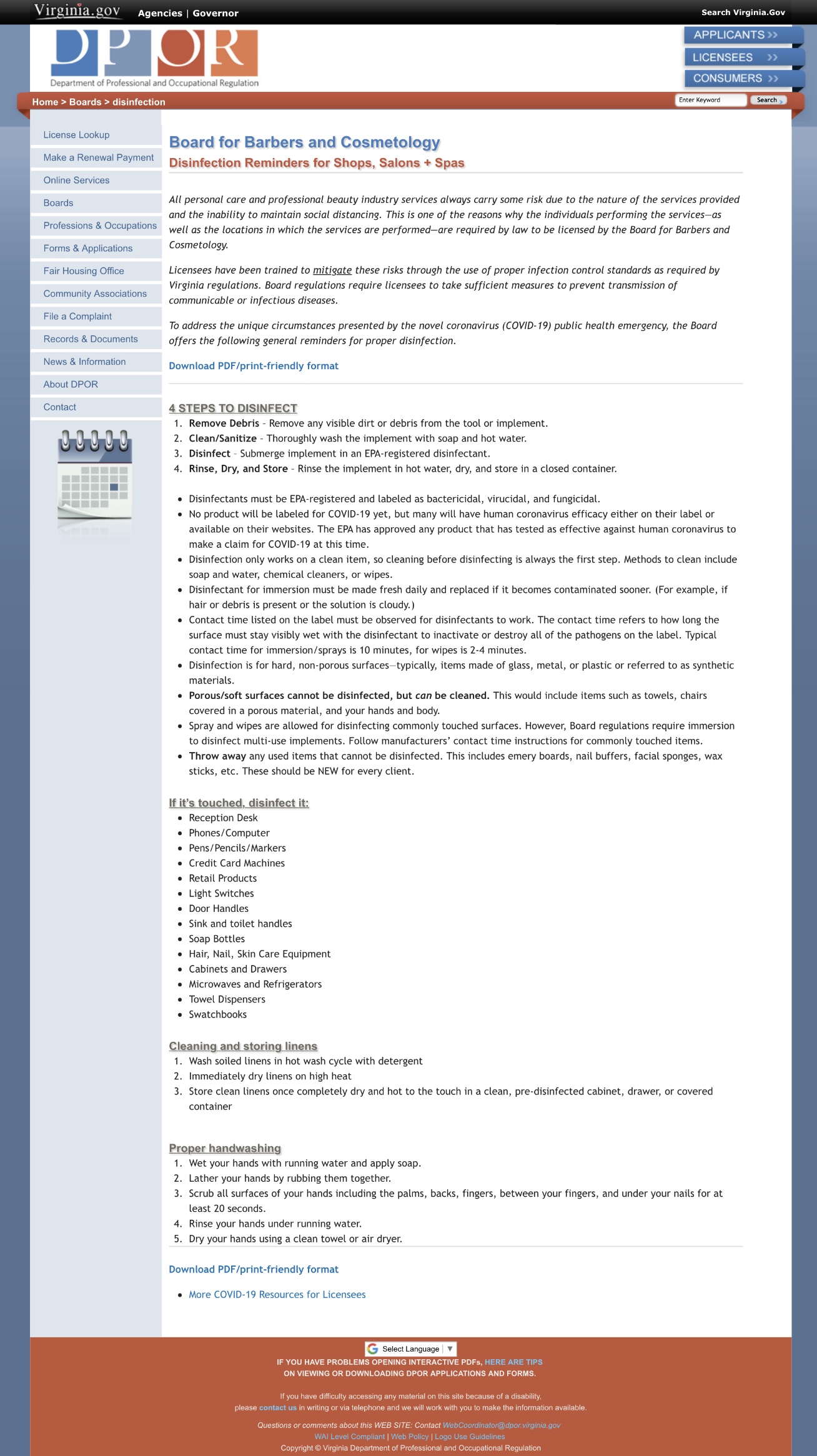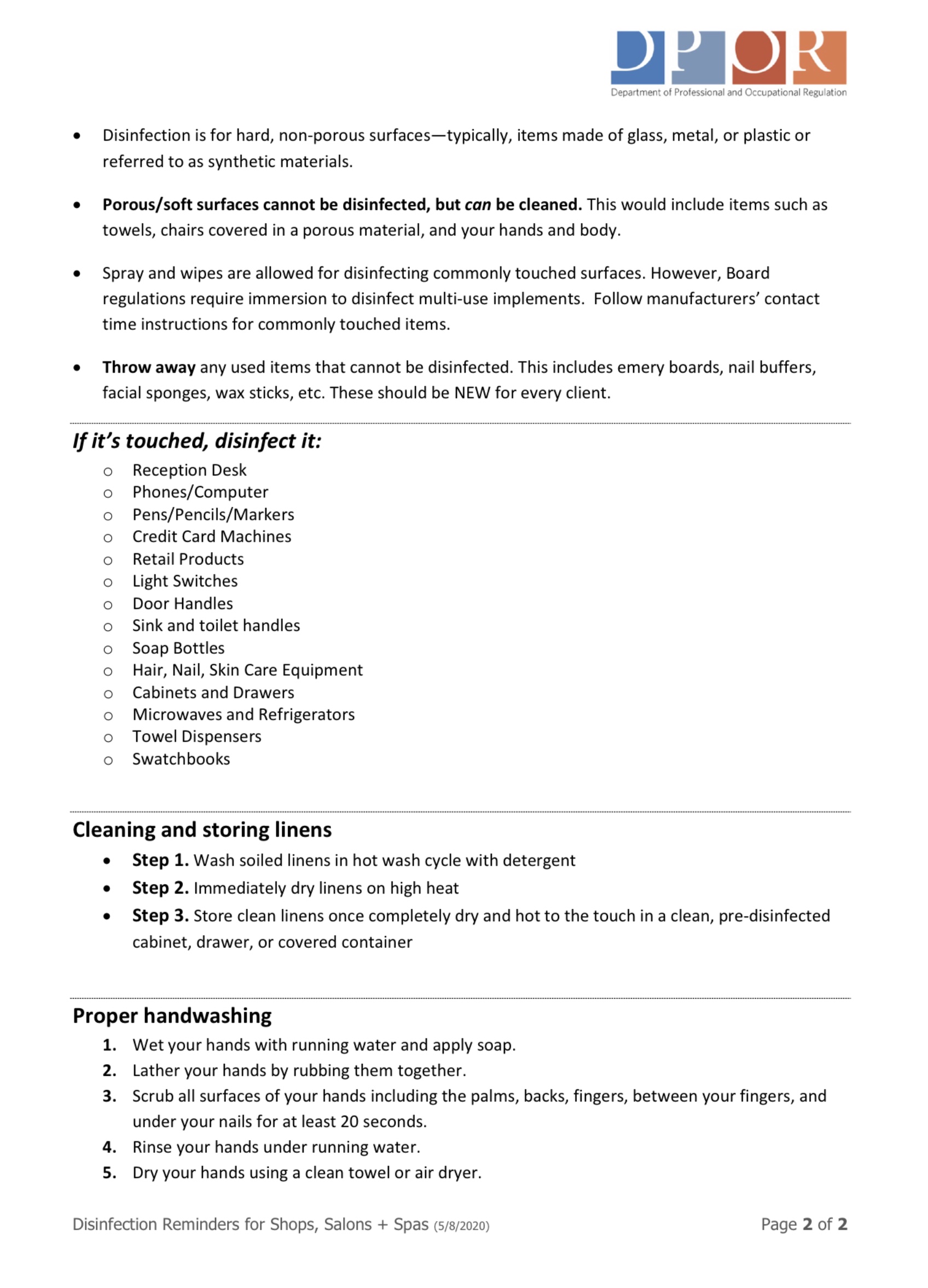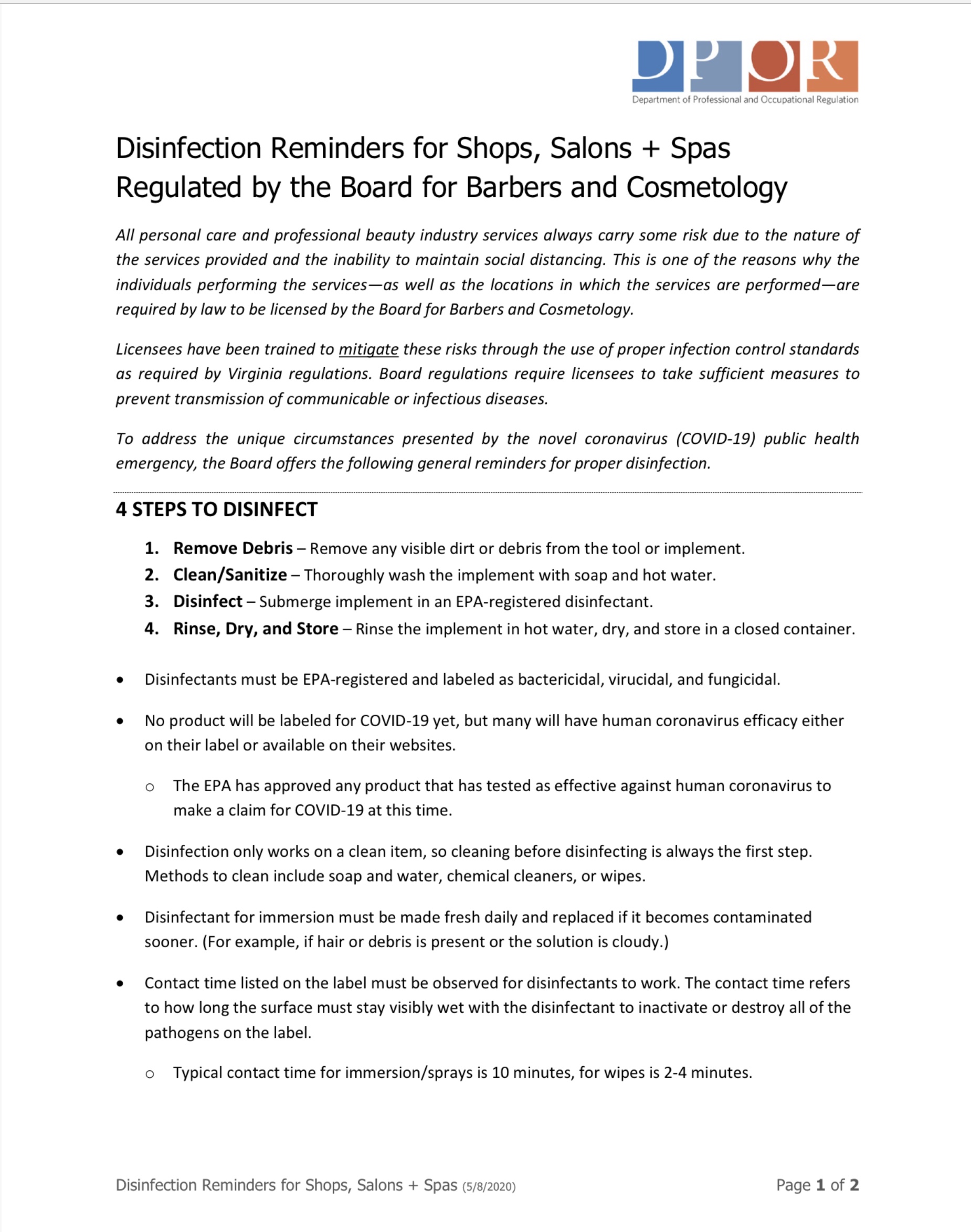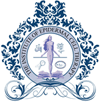|
Covid-19 Guidance
Virginia Executive Orders and Guidance
Board for Barbers and Cosmetology

Last updated 9/21/2020
Phase Three Guidelines to Further Ease Public Health Restrictions
Virginia entered Phase Three on July 1, 2020
6/18/20 News Release: Gov. Northam Outlines Phase Three Guidelines to Lift Additional Public Health Restrictions
GUIDANCE
Phase Three Guidelines for Specific Business Sectors
Where a mandatory business requirement in the guidelines conflicts with a requirement to wear a face covering, the sector-specific business requirement takes precedence.
Disinfection Reminders for Spas, Salons, and Shops
Memorandum to Licensed Schools re: On-Site Practical Instruction Under Phase Two
CDC: What Nail Salon Employees Need to Know About COVID-19
CDC COVID-19 Employer Information for Nail Salons
EXECUTIVE ORDERS
EO 67: Phase Three Easing of Certain Temporary Restrictions Due to COVID-19
EO 51 (Amended): Extending Declaration of State of Emergency Due to COVID-19
DPOR-regulated businesses affected by the provisions of Executive Order 67 include:
Barber shops;
Cosmetology, nail, and waxing salons;
Esthetics spas;
Tattoo parlors and permanent cosmetic tattooing salons; and
Body-piercing salons.
Rebuild VA grant program available to help small businesses disrupted by COVID-19.
Refer to our main COVID-19 page for best practices and other resources regarding preventing transmission of COVID-19.
FACIALS
According to the Governor's Phase 3 Covid-19 guidelines and mandates,no services that require the client to remove his/her face covering can be performed unless for medical reasons.
Board Regulations: Sanitation and Safety Standards
Disinfection Reminders for Spas, Salons, and Shops
Cosmetology, Barbering, Nail Care, and Waxing
Esthetics
Body Piercing
Tattooing
Please note that all licensees are required to take sufficient measures to prevent transmission of communicable or infectious diseases, and must comply with sanitary requirements provided for in the Board’s regulations, or any local, state, or federal law or regulation governing the standards of health and sanitation for their respective practices.
Disinfection Reminders
Board for Barbers and Cosmetology
Disinfection Reminders for Shops, Salons + Spas
All personal care and professional beauty industry services always carry some risk due to the nature of the services provided and the inability to maintain
social distancing. This is one of the reasons why the individuals performing the services—as well as the locations in which the services are performed—are
required by law to be licensed by the Board for Barbers and Cosmetology.
Licensees have been trained to mitigate these risks through the use of proper infection control standards as required by Virginia regulations. Board
regulations require licensees to take sufficient measures to prevent transmission of communicable or infectious diseases.
To address the unique circumstances presented by the novel coronavirus (COVID-19) public health emergency, the Board offers the following general
reminders for proper disinfection.
Download PDF/print-friendly format
DPOR Site: Disinfection Reminders
4 STEPS TO DISINFECT
- Remove Debris – Remove any visible dirt or debris from the tool or implement.
- Clean/Sanitize – Thoroughly wash the implement with soap and hot water.
- Disinfect – Submerge implement in an EPA-registered disinfectant.
- Rinse, Dry, and Store – Rinse the implement in hot water, dry, and store in a closed container.
- Disinfectants must be EPA-registered and labeled as bactericidal, virucidal, and fungicidal.
- No product will be labeled for COVID-19 yet, but many will have human coronavirus efficacy either on their label or available on their websites. The EPA has approved any product that has tested as effective against human coronavirus to make a claim for COVID-19 at this time.
- Disinfection only works on a clean item, so cleaning before disinfecting is always the first step. Methods to clean include soap and water, chemical cleaners, or wipes.
- Disinfectant for immersion must be made fresh daily and replaced if it becomes contaminated sooner. (For example, if hair or debris is present or the solution is cloudy.)
- Contact time listed on the label must be observed for disinfectants to work. The contact time refers to how long the surface must stay visibly wet with the disinfectant to inactivate or destroy all of the pathogens on the label. Typical contact time for immersion/sprays is 10 minutes, for wipes is 2-4 minutes.
- Disinfection is for hard, non-porous surfaces—typically, items made of glass, metal, or plastic or referred to as synthetic materials.
- Porous/soft surfaces cannot be disinfected, but can be cleaned. This would include items such as towels, chairs covered in a porous material, and your hands and body.
- Spray and wipes are allowed for disinfecting commonly touched surfaces. However, Board regulations require immersion to disinfect multi-use implements. Follow manufacturers’ contact time instructions for commonly touched items.
- Throw away any used items that cannot be disinfected. This includes emery boards, nail buffers, facial sponges, wax sticks, etc. These should be NEW for every client.
If it’s touched, disinfect it:
- Reception Desk
- Phones/Computer
- Pens/Pencils/Markers
- Credit Card Machines
- Retail Products
- Light Switches
- Door Handles
- Sink and toilet handles
- Soap Bottles
- Hair, Nail, Skin Care Equipment
- Cabinets and Drawers
- Microwaves and Refrigerators
- Towel Dispensers
- Swatchbooks
Cleaning and storing linens
- Wash soiled linens in hot wash cycle with detergent
- Immediately dry linens on high heat
- Store clean linens once completely dry and hot to the touch in a clean, pre-disinfected cabinet, drawer, or covered container
Proper handwashing
- Wet your hands with running water and apply soap.
- Lather your hands by rubbing them together.
- Scrub all surfaces of your hands including the palms, backs, fingers, between your fingers, and under your nails for at least 20 seconds.
- Rinse your hands under running water.
- Dry your hands using a clean towel or air dryer.
Download PDF/print-friendly format
More COVID-19 Resources for Licensees
DPOR Site: Disinfection Reminders
|
|






